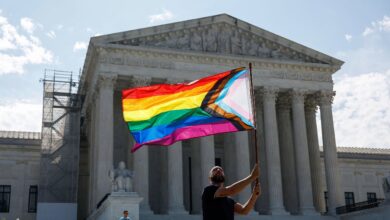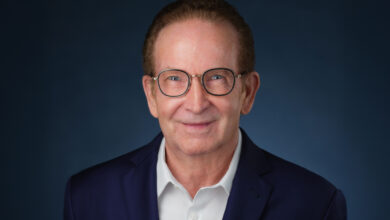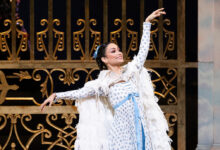
Houston’s Forgotten Gay Power-Couple: The Mid 20th-century Love Affair of Author Royal Dixon and Painter Chester Snowden
By Brandon Wolf
October’s LGBT History Month, anchored by National Coming Out Day on October 11, is a time for celebrating the ever-increasing scope of our LGBT history.
Because so little is known about Houston’s LGBT past prior to the 1950s, OutSmart is pleased to be able to expand our community’s story with this special report focusing on Houston’s gay power-couple from the 1930s to the 1960s: writer Royal Dixon and his partner of over 30 years, painter Chester Snowden.
The men are still somewhat familiar to those in the city’s art circles, but their names are not generally recognized in the LGBT community. Both of these talented men were well known in their time, very much in love, and deeply dedicated to each other.
Playing by the rules of cultured society in that era, they practiced polite discretion regarding their relationship. But they also had a streak of independence, and subtly yet firmly embraced that relationship.
Their life together would have been all but forgotten if not for the chance discovery in 2015 of some of their personal belongings and papers in a storage room. The University of Houston’s (UH) Special Collections bought two lots of these items, which are now a part of the school’s new LGBT history collection. These acquisitions are providing a deeper and more intimate understanding of these men’s lives.
A Gay Couple Nearly Lost to History
Dixon and Snowden’s involvement with Houston covers a period of at least 74 years. Dixon was a columnist for the Houston Chronicle from 1910 to 1927. Snowden was first listed in a city directory in 1926.
The first known evidence of their relationship is from 1929. By 1934, they had built their own house in Houston and moved in together. They were inseparable up to the time of Dixon’s death in 1962. Snowden continued to live in the house until his death in 1984.
The fact that any record remains of their life together seems somewhat of a miracle. After Snowden’s death, his art-gallery partner, Alfred Zeller, became custodian of their estate. After Zeller died, his son Gary maintained their personal effects. After Gary’s death, his storage unit in Hot Springs, Arkansas, was sold in bulk to an auction house that then advertised papers and mementos for sale. UH Special Collections bought two lots of the items, and they are now available to the public in the UH M.D. Anderson Library.
Piecing Together Their Lives
Skimming through the papers at UH yielded much formerly unknown information about the couple. Researching old newspapers of the era, combined with Internet searches, filled in additional pieces of the puzzle. A lengthier in-depth study of the papers will undoubtedly provide yet more facts.
But for now, only a patchwork quilt could be assembled. Assumptions have to be made, and there are gaps in the information currently uncovered. Nevertheless, the historical fabric that emerges is comprehensive enough to extend the history of Houston’s LGBT community back by several decades.
The auction house still has another lot of Dixon/Snowden materials for sale, but currently there are no bidders. One fascinating item in that unsold lot is an unpublished autobiography written by Dixon.
The UH papers contain a handwritten inventory labeled “Boxes catalogued in bedroom closet [of] Royal Dixon.” The inventory lists groups of letters and other documents that include “Letters from Dixon to Snowden.”
Then comes a heart-stopping comment: “Snowden’s [letters] to R.D. destroyed—too freely expressed. Also 40 years diary.” Indeed, the historical records of our community are tragically fragile.
Royal Dixon, Renowned Naturalist, Author, and Lecturer

Royal Dixon was born in Huntsville, Texas, in 1880. From the time of his youth, he was fascinated with plant life, and carefully cultivated his own garden where he conducted botanical experiments.
After high school, he attended Huntsville’s Sam Houston Normal Institute, a preparatory school for teachers. He then moved to Chicago and studied at Morgan Park Academy and the University of Chicago.
Dixon’s earliest work was as a child actor and dancer. His last known theater appearance was in 1903 at the magnificent Iroquois Theater in Chicago. This is the same theater that was engulfed by fire in December of that year, claiming 602 lives. That tragedy might have moved Dixon away from his involvement with live theater.
From 1905 to 1910, Dixon worked as an assistant curator at the newly built Chicago Field Museum (now the Museum of Natural History). Then from 1910 to 1927, he worked for the Houston Chronicle and wrote a syndicated column entitled “The Human Way.”
In 1914, Dixon published his first book, The Human Side of Plants. The book was so well received that he followed up with The Human Side of Trees and The Human Side of Birds in 1917. He completed his four-book series with The Human Side of Animals in 1918. The books were illustrated with sketches, and each book included four beautiful color plates.
His books fascinated the public, revealing qualities that plants, trees, birds, fish, and animals have in common with human beings. Readers of his first book were intrigued by such topics as: Feathered Artists, Cliff-Dwellers and Mound Builders, Policemen of the Air, Dancers, Feathered Athletes, Professional Musicians, Giant Road-Makers, Scavengers and Street-Cleaners, Courts of Justice, Birds and Their Beauty Parlors, Aviators, Bird Fishermen, Mimics and Ventriloquists among Birds, Bird Actors and Their Theatres. Readers eagerly came back for Dixon’s further observations found in his three sequel volumes.
His books became popular in school classrooms and libraries, and Dixon enjoyed a career as a lecturer. At a time when movies and radio were in their infancy, visiting lecturers were popular entertainment. Reporters from local newspapers interviewed Dixon and produced large, ornately illustrated articles.
Dixon was firmly grounded in the field of science, but some of his theories left the media incredulous. A few of his more well-known but questioned theories involved classifying women as flowers to reveal their characters, studying the soles of women’s feet to determine what qualities they possess, and romance actually being brought on by a “love germ.” It’s hard to know if Dixon really believed these things or was just adept at entertaining an audience.
One particularly campy article from 1916 quotes Dixon as saying that Mrs. John Astor could be classified as an orchid: “The woman who fills the world with perfume and lures and captivates men by her extraordinary love-liness.”
On the flip side: “The wife who is content to sit at the feet of great hubby and say, ‘Yes dear! How I wish I had your brains, darling!’ is a mushroom woman who springs up at night in the shade of the great tree—her lord.”
He goes on to note that a cactus has thorns to protect itself: “Talent supplies a woman with thorns. No men like brains in a woman, though they will have to get used to the age of the superwoman at hand.”
Dixon continued to write, publishing 10 more books over the next 25 years. He founded a creative writing school, worked with the efforts to help immigrants become a part of American life, advocated for women’s suffrage and even organized a church for animal rights. His popularity as a public lecturer endured for the remainder of his life.
Chester Snowden’s Boundless Talent

Chester Snowden was born in Elgin, Texas, in 1900. After high school, he attended the University of Texas in Austin and then the Cooper Union in New York.
He furthered his talent at the Grand Central Galleries Art School, also in New York, and the Richard Art School in Los Angeles.
Snowden worked as a painter and a book illustrator throughout his life. As an illustrator, he met such literary personalities as Robert Frost, George Bernard Shaw, and Edna St. Vincent Millay.
He frequently participated in art exhibits in Houston, throughout Texas, and as far away as the Corcoran Gallery of Art in Washington DC. His work can be found today in the collection of the Museum of Fine Arts, Houston (MFAH).
Snowden was proficient in a variety of styles, including Modernist, Post-Impressionist, Cubist, and Abstract. He also produced sculptures and designed jewelry. He taught art classes, where he encouraged fresh, bold ideas. He frequently participated as a judge in juried art exhibitions.
Two Talented Men Fall in Love
When or how Dixon and Snowden met and fell in love is unknown. It may have been around 1927 or 1928 in New York, since a Houston Chronicle article from 1929 mentions them together for the first time—accompanying each other to Camp Eagle Lake in Kerrville, a summer retreat for young boys.
Dixon was popular at the camp, with his fascinating lectures about wildlife. Snowden was an apt complement, offering instruction in how to capture nature in artwork.
For the next four years, the men’s addresses bounced between Houston, New York, and Colorado Springs, but there is no indication that they lived together. Then in 1933, the Houston Chronicle reported that Dixon and Snowden had returned to Houston and were living with Dixon’s sister.
A year later, they were both living at 1105 Truxillo, which is about 20 blocks northeast of the MFAH. The address was also just two blocks from where they were building a house at 1310 Truxillo. In 1934, they moved in together and spent the rest of their lives there.
The men nicknamed the house Camellia Place. The grounds were lush with shrubs, trees, and vines that crept up the walls of their home, filling it with fragrance. A visitor in 1940 described their home as “a jungle of plants and birds in gilded cages.”
An additional small structure was named “The Patio,” and Dixon did much of his writing there. Snowden had his artist studio inside the two-story main house.
The house still exists today, but its original charm seems lost under new siding and protective fencing that was added during a 2001 renovation.
Defending the Underdogs

Dixon always expressed a fondness for the underdogs of the world. Perhaps his own experience as a gay man gave him the sensitivity to see life through eyes other than his own.
Two of his books dealt with “the Negro experience.” He was known to discredit the idea that blacks were somehow inferior and less deserving, and he was also an ardent supporter of a woman’s right to vote.
In another book, Dixon wrote about immigrants and asked readers to help at least one family adjust to life in a new country.
His keen observations about animals and plants revealed that all living things reflect many of the same characteristics and qualities, and have a right to life, liberty, and happiness. He argued that humanity has historically been prone to exploit nature for its own whims, including the common practice of live vivisection of animals at the time.
Out on the Bayou
Although Dixon and Snowden conducted themselves with discretion, they also balked at allowing their relationship to be written off. Snowden changed his middle name to Dixon and used the professional name Chester Dixon Snowden.
The men had a joint checking account, with both of their names printed at the top and space for both of their signatures at the bottom. During the holidays, they mailed out cards with both of their names printed, one beside the other, below the greeting inside.
Dixon and Snowden traveled together often. Snowden was given an assortment of descriptions by local newspapers—“Mr. Dixon’s traveling companion,” “male secretary to Mr. Dixon,” or “the artist who illustrates Mr. Dixon’s books.”
Snowden did indeed illustrate the last three of Dixon’s books. He also designed a rather elaborate ring for Dixon to wear.
A 1940 U.S. census form shows that Snowden was initially listed at 1310 Truxillo as a “roomer.” That was subsequently crossed out and replaced with “foster son.” The standard code of the times that indicated a gay relationship was, “They share a studio together.”
Dixon and Snowden were not the only gay couple in Houston. Young artists Carden Bailey and Gene Charlton also lived together and were considered a couple, but unlike Dixon and Snowden, they eventually fled Houston for New York and ended up in heterosexual marriages.
Early gay-rights pioneer Ray Hill says he remembers Dixon and Snowden’s names, but doesn’t remember meeting them, probably because Hill was young and Houston had very little organized gay social life at the time.
The Twilight Years
Dixon’s success as a writer continued up through 1938. In 1945, at the end of World War II, he wrote an 87-chapter book, hundreds of pages long, entitled Earth Hunger. The original manuscript resides at UH, complete with a publisher’s rejection letter.
Two other books, Bird Personalities (which was illustrated by Snowden) and The Lost Angel, were never published either. In 1961, Dixon (who was now 81 years old) sought to write a column for the Houston Press (no relation to the current publication bearing the same name), and was politely but firmly rejected.
In 1962, Dixon took ill and spent much of his time resting in bed. In December of that year, he passed away. The nature of his relationship with Snowden is evident from the telegrams of condolence sent to Snowden at the time of Dixon’s death.
Snowden continued to live at 1310 Truxillo for the next two decades. He made social appearances and continued to teach and to involve himself in exhibits before his death in 1984, at the age of 83.
Dixon’s grave marker, which identifies him as a “Naturalist,” is located in Houston’s beautiful Glenwood Cemetery. The plot where he is buried has other markers with names that don’t seem to have any connection to him. A gravestone for Snowden is nowhere in sight, and no record has been found of his final resting place.
City directories from the late 1970s until Snowden’s death show a Jim Jolly living with him. The nature of their relationship is unknown—he may have been a companion, live-in nurse, partner, or roomer. Following Dixon’s death, very little is known about Snowden’s life.
Although their story was almost lost forever, Dixon and Snowden will no longer be strangers to the LGBT community they were part of for so many years—even if that community was all but invisible to them. While Dixon died without knowledge of Stonewall, Snowden lived long enough to witness dramatic civil-rights victories, Anita Bryant, the rise of “gay” Montrose, and the horrific AIDS epidemic. One can only imagine his reactions to our “new world” of legalized same-sex marriage.
As new generations of LGBT Houstonians enthusiastically embrace their history, perhaps their future research efforts will bring the hazy details of this prominent gay Houston couple into sharper focus, and with much more vivid coloring.
Special appreciation to Don Kelly, Michael Bedwell, J.D. Doyle, Sara Fernandez, Randy Tibbits, Jo Collier, Wayne Gilbert, Christine Doby, the UH LGBT History Collection, and houstonlgbthistory.org.
The slide show below provides extensive visual reinforcement for this story.
[smugmug url=”feed://outsmartmagazine.smugmug.com/hack/feed.mg?Type=gallery&Data=64197403_dJsVsN&format=rss200″ imagecount=”100″ start=”1″ num=”20 thumbsize=”Th” link=”lightbox” captions=”false” sort=”false” window=”true” smugmug=”false” size=”L”]
Brandon Wolf is a frequent contributor to OutSmart magazine.










